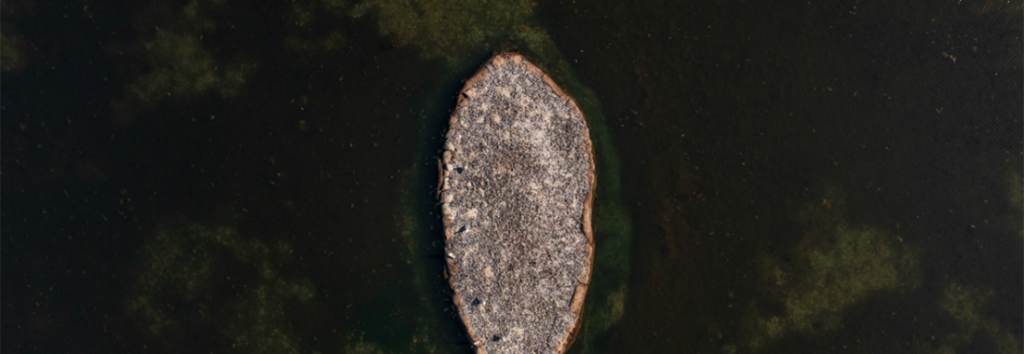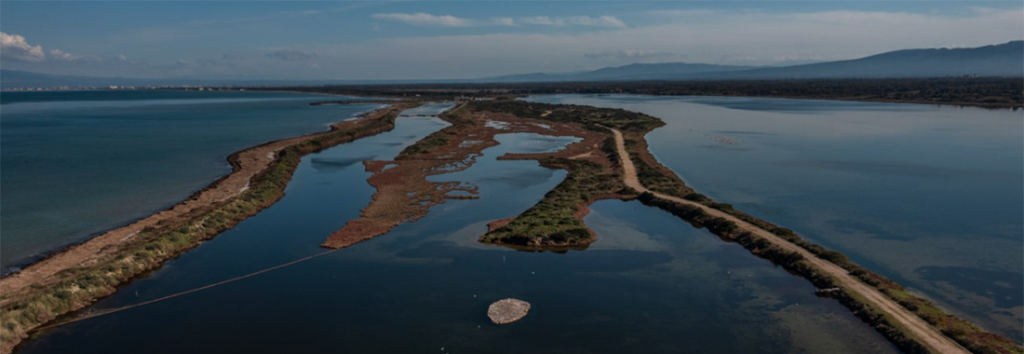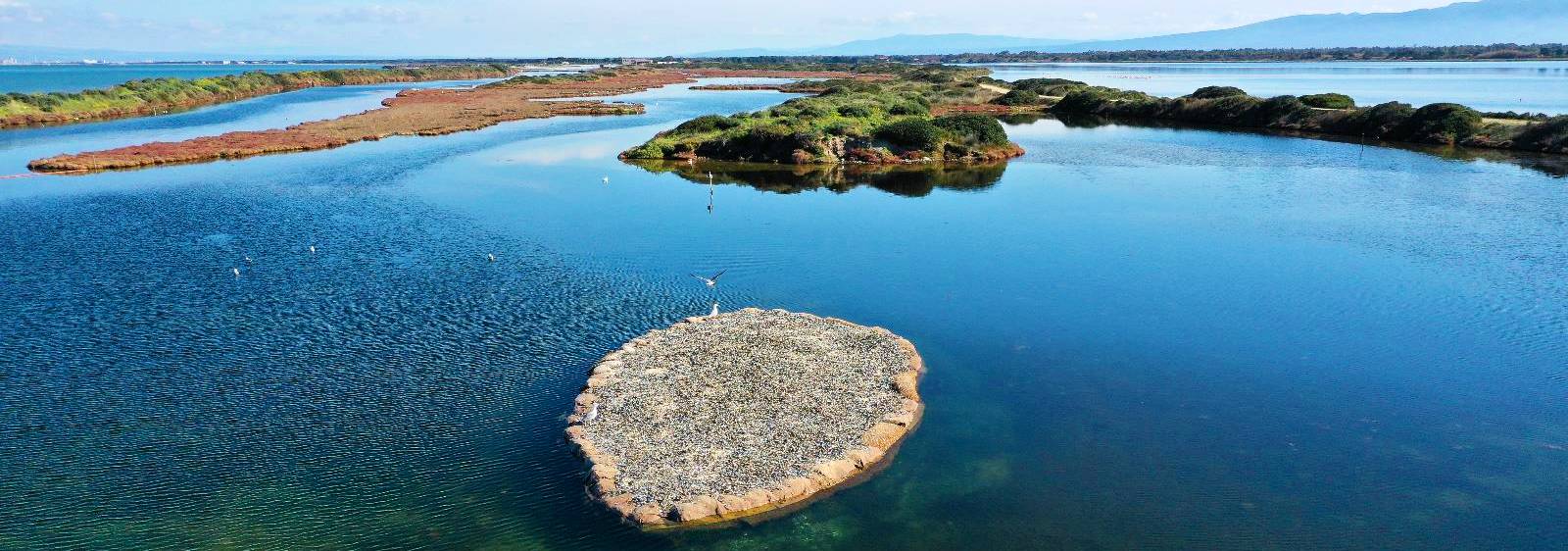Original source: https://www.medseafoundation.org/index.php/en/news-eng/728-artificial-island-made-of-mussel-shells
Little tern, common tern, sandwich tern, rosy gull and black-winged stilt are some of the bird species that have found a home in Corru Mannu in recent weeks. Thanks to the circular economy project applied to mussel farming – which sees MEDSEA and Nieddittas cooperating in the name of environmental protection at the forefront – the artificial islet made with mussel shells in the wetland in the Gulf of Oristano is populated!
This is what the Mediterranean Sea and Cost Foundation (MEDSEA), a non-profit institution that promotes the protection and sustainable development of coastal ecosystems, and Nieddittas, the brand that manages the entire mussel farming chain in the Gulf of Oristano, have placed at the core of the project on the reuse of mussel shells for the construction of an artificial islet at the Corru Mannu pond (Ramsar site of Corru S’Ittiri, ponds of San Giovanni and Marceddì).
Supporting the establishment and nesting of some bird species is the objective of the initiative born within Maristanis, an international cooperation project for the protection and integrated management of the coastal wetlands of the Gulf of Oristano.

The islet has an ovoid shape, it is about 20 metres long, 7 metres wide and 2 metres high, i.e. about 50 cm above average sea level and is therefore almost completely immersed in water. It is made up of 2000 jute sacks full of mussel shells (deriving from the Nieddittas processing) manually positioned with the help of a boat, which allowed the materials to be transported to the place of construction, and the support in the water of two divers who they coordinated the positioning activities at about 50 meters from the mainland. In the area where the Nieddittas establishments are located, to which the Sardinia Region has entrusted the protection and safeguarding of the site, the artificial island enjoys an extremely favorable position for nesting, wintering and migration of important species of aquatic birds and migratory species.
The space inside the embankment was further filled with mussel shell waste, stratified and gradually compacted to make the surface stable and walkable. The surface layer of the islet consists of a mixed layer of crushed shells, mussels and fine linen to make the surface welcoming for future guests of the islet. Furthermore, following the results of the monitoring, silhouettes of birds will be positioned, if necessary, which will be able to attract other species to the land for nesting.
Why an artificial island in Corru Mannu, Oristano?
Corru Mannu, a highly valuable wetland, was already included in the list of wetland areas of international importance in the 1970s, drawn up on the basis of the Ramsar convention. On the basis of the community directive “Habitat” n. 92/43/EEC and “Birds” no. 79/409/EEC it was declared a site of Community interest and a special protection area and consequently included in the Natura 2000 network, a system of areas dedicated to the conservation of biodiversity, characterized by the presence of habitats and species of fauna and flora of high interest. In recent weeks, the islet, as hoped, has begun to host the nesting of the Little Tern (Sternula albifrons), of the Common Tern (Sterna hirundo), of the Sandwich Tern (Thalasseus sandvicensis), of the Rosy Gull (Chroicocephalus genei) and of the Cavaliere d’ Italy (Himantopus himantopus).

The innovation introduced by Nieddittas differs from similar experiments, already tested in Italy and Sardinia, for the material that is used, i.e. the shells of mussels, capable of absorbing carbon dioxide and which therefore can be considered a net carbon sink . Therefore, Nature-based-Solutions are being tested in the protected area of Corru Mannu.
[…]What happens in this case, where the islets are areas naturally protected from the predation of feral or stray wild or domestic animals; the distance from the bank allows the passage of vehicles and working personnel without disturbing the delicate nesting phase; the ease of screening on the road adjacent to the closest bank facilitates observations and control of the structures; the use of the project for dissemination and environmental education actions, the area becomes a real outdoor naturalistic laboratory.
The islet, because of its distance from the mainland, does not allow “access to terrestrial and/or stray predators (such as cats, rats or dogs…) explains Alessio Satta, president of the MEDSEA foundation – and “can be adapted and promoted in other wetlands”, through the use of waste – free of contaminants, such as mussel shells without the edible part – for the construction of nesting areas or environmental restoration.

